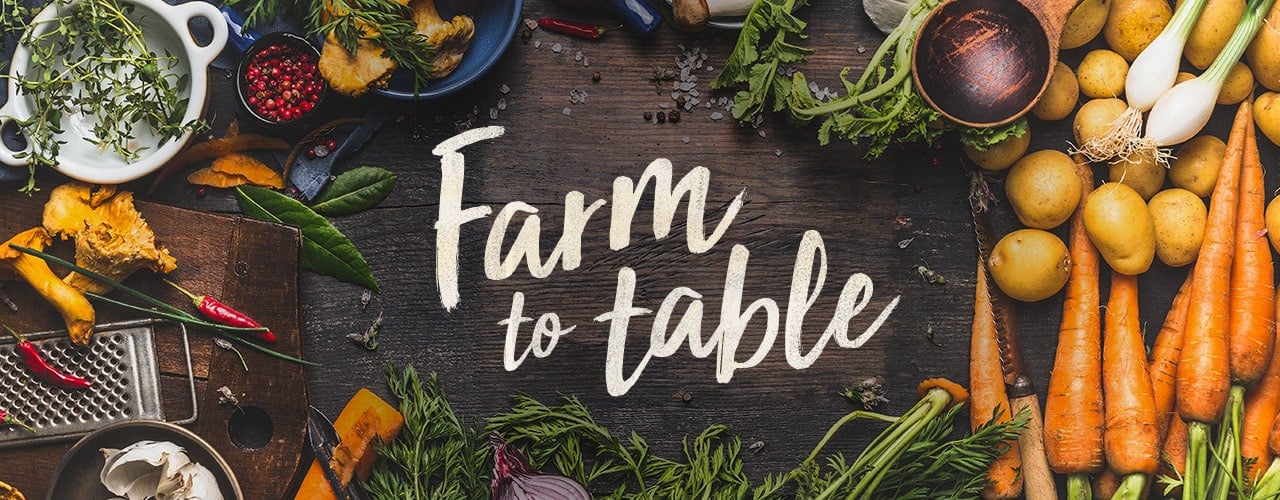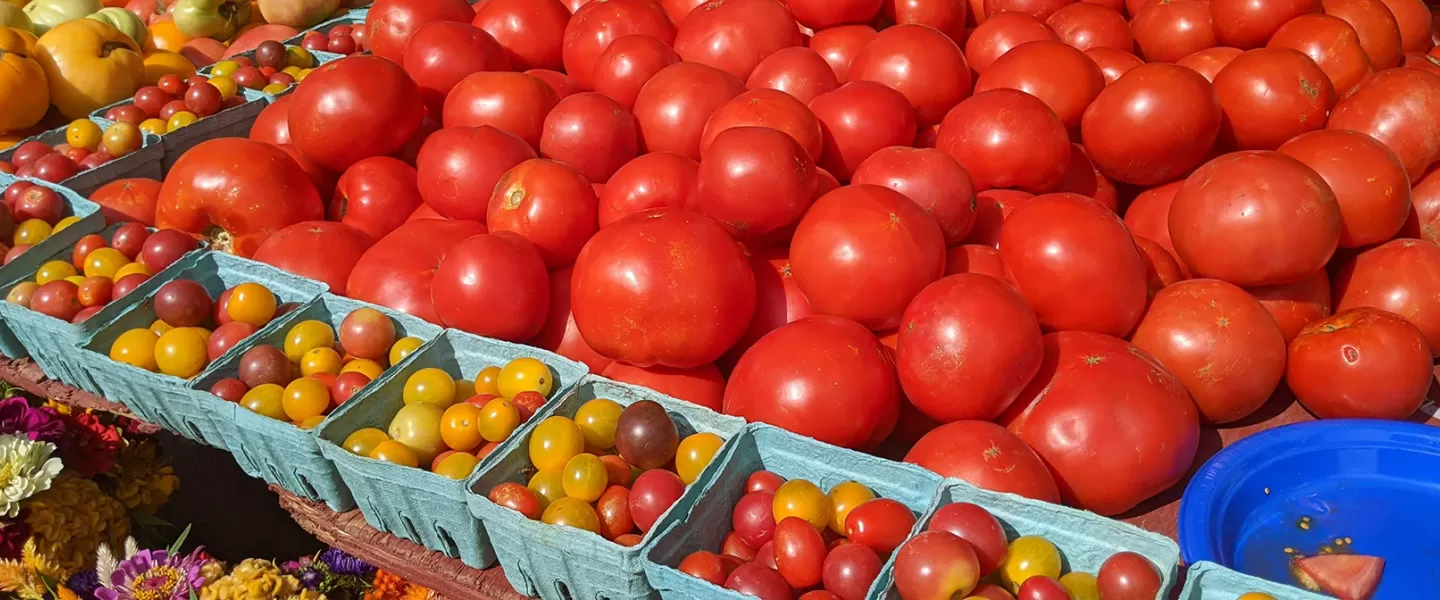Washington, D.C. is a vibrant hub for farm-to-table dining, where chefs and restaurateurs are passionate about sourcing fresh, local ingredients. This culinary movement emphasizes sustainability, supports local farmers, and offers diners an unparalleled dining experience. In this article, we will explore the farm-to-table concept in Washington, D.C., highlighting successful models, emerging trends, and the importance of building relationships with local farmers. We will also provide tips on menu planning and discuss the ethical considerations of meat sourcing. Join us as we delve into the world of farm-to-table dining and discover how you can support this sustainable and delicious movement.
Case Studies of Successful Farm-to-Table Models
Many restaurants in Washington, D.C. have successfully implemented the farm-to-table model, creating thriving businesses that support local farmers and delight diners. Here are a few notable examples:
The Source
The Source is a modern American restaurant that has been a pioneer in the farm-to-table movement in Washington, D.C. since 2009. Chef and owner Scott Drewno sources ingredients from over 50 local farms and purveyors, and the menu changes daily to reflect the freshest seasonal offerings. The Source has received numerous accolades, including a Michelin star, and has been featured in publications such as The New York Times and The Washington Post.
Blue Duck Tavern
Blue Duck Tavern is a fine-dining restaurant located in the Park Hyatt Washington, D.C. hotel. Chef de cuisine Brad Deboy sources ingredients from local farms within a 100-mile radius, and the menu features modern American cuisine with a focus on seasonal, sustainable ingredients. Blue Duck Tavern has been awarded a Michelin star and has been recognized by Wine Spectator for its outstanding wine program.
Commissary
Commissary is a casual restaurant in the Capitol Hill neighborhood of Washington, D.C. that focuses on American comfort food made with locally sourced ingredients. Chef and owner Danny Lee works closely with local farmers to create a menu that changes seasonally. Commissary has been praised for its creative and delicious dishes, and has been featured in publications such as The Washingtonian and Eater.
| Restaurant | Chef | Michelin Stars |
|---|---|---|
| The Source | Scott Drewno | 1 |
| Blue Duck Tavern | Brad Deboy | 1 |
| Commissary | Danny Lee | 0 |
These are just a few examples of the many successful farm-to-table restaurants in Washington, D.C. By supporting these businesses, diners can enjoy delicious, sustainable cuisine while supporting the local economy.
- Related post: Case Studies of Successful Farm-to-Table Models
- Related post: Farm-to-Table Trends in Fine Dining

Farm-to-Table Trends in Fine Dining
The Rise of Hyper-Local Cuisine
In recent years, there has been a growing trend towards hyper-local cuisine in fine dining restaurants. This means that chefs are increasingly focused on using ingredients that are sourced from within a very small radius of the restaurant. This has a number of benefits, including:* Reduced food miles: By sourcing ingredients locally, chefs can reduce the environmental impact of their restaurants.* Fresher ingredients: Local ingredients are typically fresher than those that have been shipped from far away. This results in dishes that are more flavorful and nutritious.* Support for local farmers: By using local ingredients, chefs can support local farmers and the local economy.
- Related post: Case Studies of Successful Farm-to-Table Models
- Related post: Building Relationships with Local Farmers
The Use of Seasonal Ingredients
Another important trend in farm-to-table fine dining is the use of seasonal ingredients. This means that chefs are cooking with ingredients that are in season at the time of year. This has a number of benefits, including:* Better flavor: Seasonal ingredients are typically more flavorful than those that are out of season.* More variety: Using seasonal ingredients allows chefs to offer a wider variety of dishes throughout the year.* Support for local farmers: By using seasonal ingredients, chefs can support local farmers who are growing produce that is in season.
| Month | Seasonal Fruits | Seasonal Vegetables |
|---|---|---|
| January | Apples, citrus fruits, pears | Brussels sprouts, carrots, kale, leeks, onions, potatoes, winter squash |
| February | Apples, citrus fruits, pears | Brussels sprouts, carrots, kale, leeks, onions, potatoes, winter squash |
| March | Apples, citrus fruits, pears | Asparagus, broccoli, carrots, cauliflower, kale, leeks, onions, potatoes, spinach |
These are just a few of the trends that are shaping farm-to-table fine dining. As more and more chefs embrace this approach, diners can expect to enjoy increasingly delicious, sustainable, and locally sourced cuisine.

Building Relationships with Local Farmers
The Importance of Collaboration
Farmers are the backbone of the farm-to-table movement. They are the ones who grow the fresh, local ingredients that chefs use to create their delicious dishes. It is important for chefs and farmers to have a strong relationship so that they can work together to provide diners with the best possible experience.
- Related post: Case Studies of Successful Farm-to-Table Models
- Related post: Farm-to-Table Trends in Fine Dining
| Benefits of Building Relationships with Local Farmers |
|---|
|
How to Build Relationships with Local Farmers
There are a few things that chefs can do to build relationships with local farmers. First, they can visit local farms and get to know the farmers. This will help them understand the challenges that farmers face and learn about the different types of produce that they grow.
- Related post: Farm-to-Table Baking and Desserts
- Related post: Menu Planning in Farm-to-Table Cuisine
Second, chefs can buy produce from local farmers whenever possible. This will help support local farmers and ensure that they have a market for their products.
Third, chefs can work with farmers to develop new dishes that feature local ingredients. This will help promote local agriculture and give diners a chance to try new and exciting dishes.
“Building relationships with local farmers is essential for any chef who wants to create a successful farm-to-table restaurant. By working together, chefs and farmers can provide diners with the best possible experience.”

Menu Planning in Farm-to-Table Cuisine
Choosing Seasonal Ingredients
One of the most important aspects of menu planning in farm-to-table cuisine is choosing seasonal ingredients. Seasonal ingredients are those that are harvested at the peak of their freshness and flavor. This means that they are more nutritious and delicious than ingredients that are out of season.
When choosing seasonal ingredients, it is important to consider the climate of your region. Some fruits and vegetables are only available during certain times of the year, so it is important to plan your menu accordingly.
| Month | Seasonal Fruits | Seasonal Vegetables |
|---|---|---|
| January | Apples, citrus fruits, pears | Brussels sprouts, carrots, kale, leeks, onions, potatoes, winter squash |
| February | Apples, citrus fruits, pears | Brussels sprouts, carrots, kale, leeks, onions, potatoes, winter squash |
| March | Apples, citrus fruits, pears | Asparagus, broccoli, carrots, cauliflower, kale, leeks, onions, potatoes, spinach |
- Related post: Case Studies of Successful Farm-to-Table Models
- Related post: Farm-to-Table Trends in Fine Dining
Creating a Balanced Menu
Another important aspect of menu planning is creating a balanced menu. A balanced menu offers a variety of dishes that appeal to a wide range of tastes. It should include dishes that are both light and hearty, as well as dishes that are vegetarian and meat-based.
When creating a balanced menu, it is also important to consider the nutritional value of the dishes. Make sure to include dishes that are high in protein, fiber, and vitamins.
“Menu planning is an important part of any restaurant operation, but it is especially important for farm-to-table restaurants. By choosing seasonal ingredients and creating a balanced menu, chefs can ensure that their diners have a delicious and nutritious meal.”
- Related post: Farm-to-Table Baking and Desserts
- Related post: Building Relationships with Local Farmers

Final Thought
The farm-to-table movement in Washington, D.C. is thriving, offering diners a unique and sustainable dining experience. By supporting local farmers and sourcing fresh, seasonal ingredients, chefs are creating menus that showcase the bounty of the region. As consumers, we can play a vital role in supporting this movement by choosing restaurants that prioritize farm-to-table practices. Together, we can create a more sustainable and delicious food system in Washington, D.C. and beyond.




